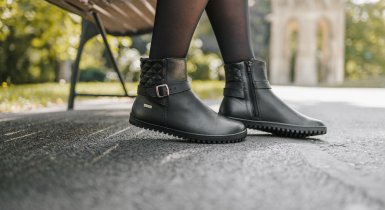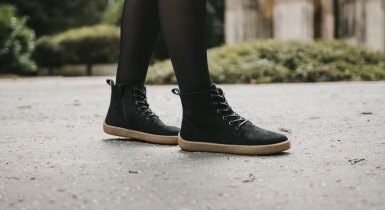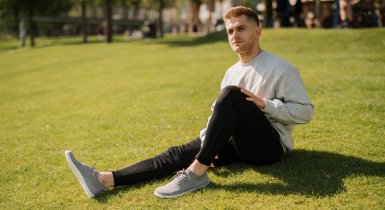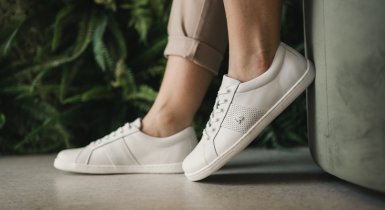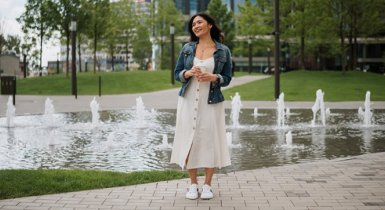Autumn/Winter collection from the point of view of material properties
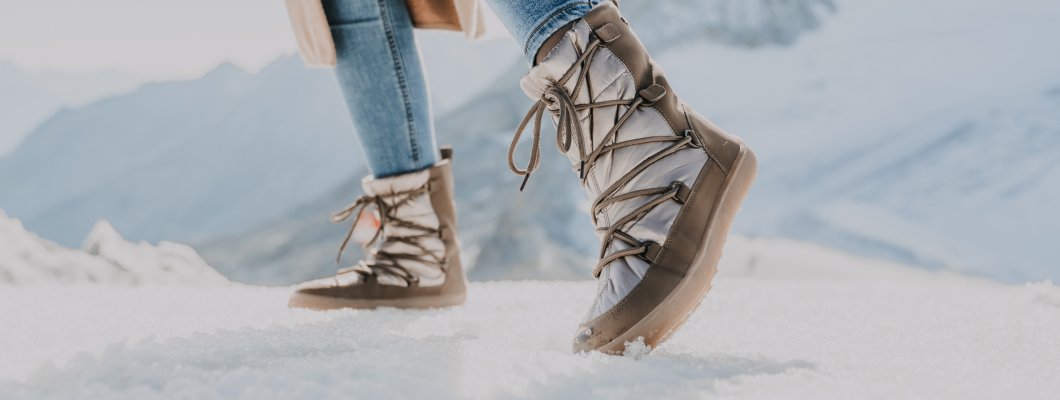
Our product range includes a variety of constants. However, for the upcoming 2023/2024 season, we have proudly presented an entirely new collection of barefoot shoes designed for men, women, and children. These shoes are perfect for the unpredictable weather conditions of autumn and winter. Each collection we offer has unique features, and our collection for autumn and winter is no different. The functionality of cold-weather shoes heavily relies on the quality of materials used in their construction. With shoes for wet or cold weather, every component and detail must be carefully considered. While we have already introduced individual models from our latest collection, let's take a closer look at the materials and components that work together to keep our feet dry and warm during the fickle weather of autumn and winter.
Table of contents
The upper of the shoe
The shoe must be functional from the outside, so let's first look at the upper.
Leather played a central role in selecting the core material for the Fall/Winter collection. Humans have used it since the Palaeolithic era, and it remains a popular material for shoes and various other products. Leather is highly versatile, and few synthetic materials can match its quality. Interestingly, the leather industry helps prevent environmental damage caused by disposing of unused cattle hides, which would otherwise have far-reaching effects on the environment if not for the tannery.

At Be Lenka, we source our leather from local European animals and subject them to extensive testing to ensure they comply with strict EU directives. During the initial production of raw materials, we regularly check compliance with all norms, procedures, and standards to ensure the highest possible leather yield. We mainly work with two types of leather- nappa and nubuck- when designing and manufacturing our shoes. In the following paragraphs, we will explore why leather is such a popular and practical material for making shoes, and we will also explain the difference between nappa and nubuck. Additionally, we will shed light on hydrophobic skin treatment and the importance of regular care for your shoes. We will also explain what it means when a shoe has a membrane and reveal the secret of our unique model - Be Lenka Venus.
Why leather?
It’s fascinating to know that the oldest surviving leather shoes were found in a cave in Armenia and date back to over 5,500 years ago! Despite the availability of synthetic leather, genuine leather remains the most popular choice due to its durability and comfort. Leather footwear accounts for over 52% of the total leather and leather products market. But what makes it so popular? Let's explore its benefits.
- Leather is a 100% natural material that allows for breathability unmatched by synthetics.
- The leather is highly flexible, easy to shape, and lightweight.
- The leather is highly durable and resistant to tearing, scratches, and damage.
- When cared for and treated with waterproofing agents, leather resists water, moisture, and soiling.
- Although the leather is solid and durable, it is also incredibly soft and comfortable.
- The shoe’s leather upper can adapt well and conform to the foot’s shape.
- The leather is very versatile and suitable for all types of shoes.
What is the difference between nappa and nubuck?
When making shoes, we typically use two types of leather: nappa and nubuck. However, for the Snowfox Kids models, we use a kind of cowhide combed called chipboard. Do you know the difference between nappa and nubuck? Both are made by working the leather’s top side (the side with fur), while suede, which is often mistaken for nubuck, is made by processing the underside of the leather. The main difference between nappa and nubuck lies in the final finish during processing. Nappa has a smooth, even polished finish, while nubuck has a roughened surface similar to suede. Nubuck is more resistant to damage and weather elements but is also more prone to dirt and can be more challenging to clean due to its rough surface. Nappa, on the other hand, is softer and easier to maintain. Both types of leather require care and attention to maintain their functionality and longevity. It is recommended to regularly apply appropriate leather care products to help retain moisture resistance, water repellency and dirt resistance. This will help keep your shoes looking like new for a long time. Investing in high-quality shoes ensures long-lasting footwear that never disappoints.

Hydrophobic treatment
The primary function of leather is to protect the animal from external elements. However, even leather has its limits and can't withstand everything. Some of our models are made of leather that has undergone a hydrophobic, or water-repellent, treatment. What does that mean? In the tannery, the leather undergoes a hydrophilisation process, where it is chemically treated to make its surface repel water. We then cut out the necessary parts from the leather treated this way and sew the models. Leather with a hydrophobic finish can be found on Ranger 2.0 (All Black, Grey&Black, Dark Brown, Army Green, Dark Blue and Red), Winter 3.0 (Matt Black, Walnut Brown and Chocolate), Entice (Cinnamon Brown and Matt Black) and Bliss (Pine Green, Brown, Burgundy Red, Black and Cloud Grey). These shoes also need to be regularly waterproofed to maintain water repellency. Whether or not the leather has a hydrophobic finish, we can achieve excellent water repellency and moisture resistance by regularly using the right waterproofing agent.
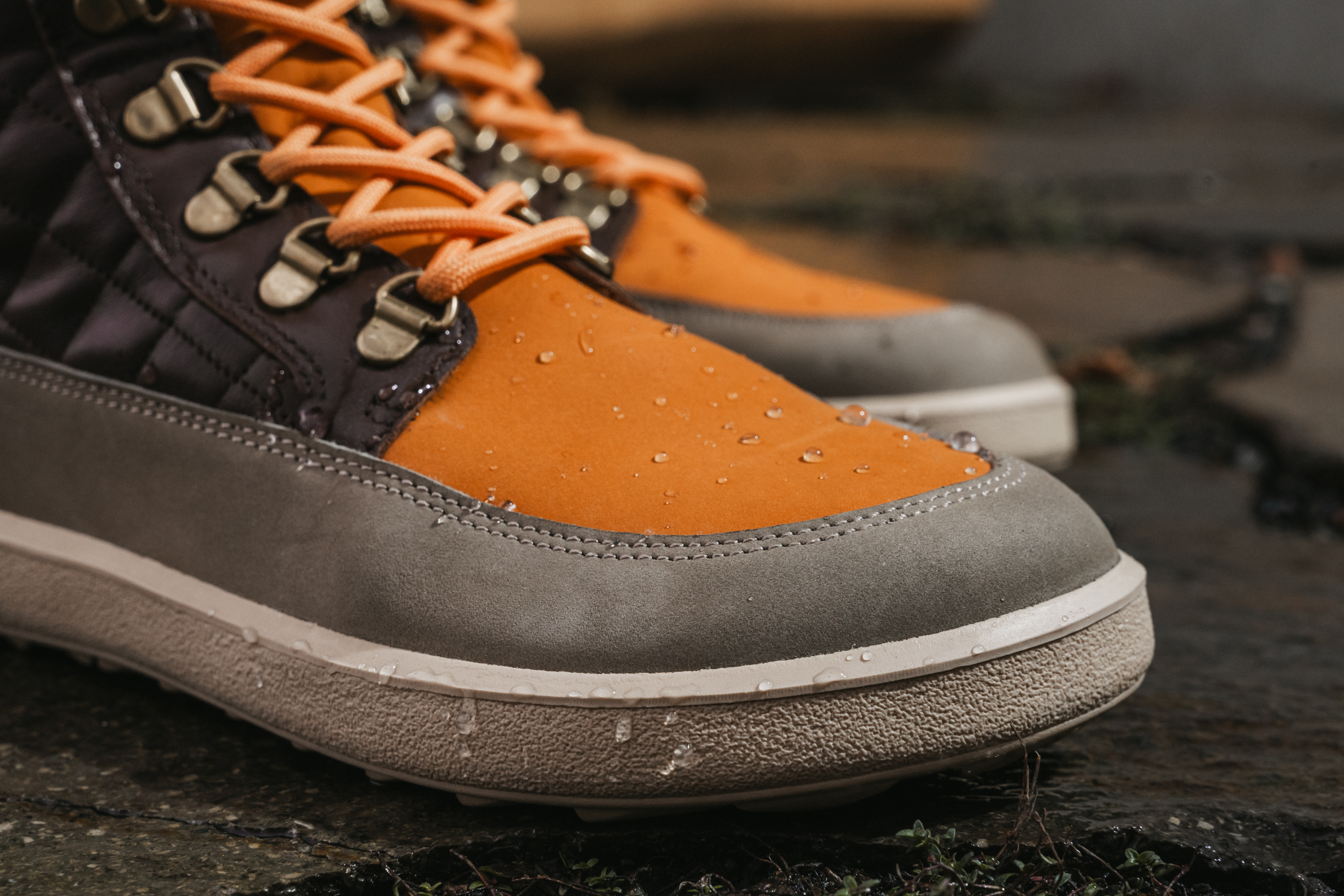
Water-repellent or water-resistant?
You may be wondering why we keep talking about water repellency instead of water resistance regarding leather shoes. These two terms are often used interchangeably. However, there is a significant difference between the two. Water repellency is achieved through surface treatment of the leather, while water resistance refers to the treatment of the material throughout its entire thickness.
It is a widely spread misconception that using a waterproofing spray can make a shoe 100% waterproof. The critical factor in making leather water-resistant is to make it water-repellent, which prevents water from penetrating the deeper layers and causing it to get soaked. The degree of water repellency offered by each type of leather may vary.
Hydrophobic membrane
Some winter shoe models come equipped with a water-repellent membrane carefully sewn between the upper of the shoe and the lining. This extra layer helps to improve the shoe's functionality and increase its resistance to water and moisture. So, even if caught off guard by a sudden shower or snowfall, you won't have to worry about your feet getting wet.

The secret of Be Lenka Venus
At first sight, the Be Lenka Venus model catches the eye with its captivating knitted upper, raising questions about why it's included in the Fall/Winter collection. However, we've got a secret to share. Not only is the lower part of the shoe insulated with a warming fleece, but the knitt is also treated with a hydrophobic treatment and a water-repellent membrane. As a result, the Be Lenka Venus model proudly takes its place in the latest collection for cold weather and is not afraid of encountering winter or rain.
The inside of the shoe
The upper part of the shoe effectively keeps the elements out, while the inner part ensures maximum comfort, dryness, and warmth. Upon examining the inside of the shoe, we can see that it comprises two components - the lining and the insole.
Lining
Let’s look closer at the Be Lenka barefoot models from the Fall/Winter collection. These shoes are insulated with either fleece or Merino wool, making them suitable for different weather conditions. In this article, we will discuss both types of lining and explain which weather conditions they are best suited for and what you can expect from these shoes.
Fleece
Fleece is a type of synthetic insulating fabric commonly made from polyethylene terephthalate (PET), a polyester type. While it can also be made from other synthetic fibres, PET is one of the most popular materials. Fleece is highly valued for its practical properties in both the footwear and textile industries. It is a comfortable and breathable fabric that does not cause sweating, and it is designed to allow moisture to be transmitted away from the body while also blocking the entry of moisture from the outside. Moreover, it is quick-drying and provides excellent thermal insulation.
Since fleece is mainly produced synthetically, it is a great vegan substitute for sheep's wool in the clothing and footwear industry. Regarding thermal insulation, fleece is ideal for autumn and spring weather or mild winter. A person tolerating cold weather well or is used to wearing functional thick socks in winter shoes can get by with fleece insulation all winter. However, those who love winter and colder weather may prefer to opt for Merino wool.
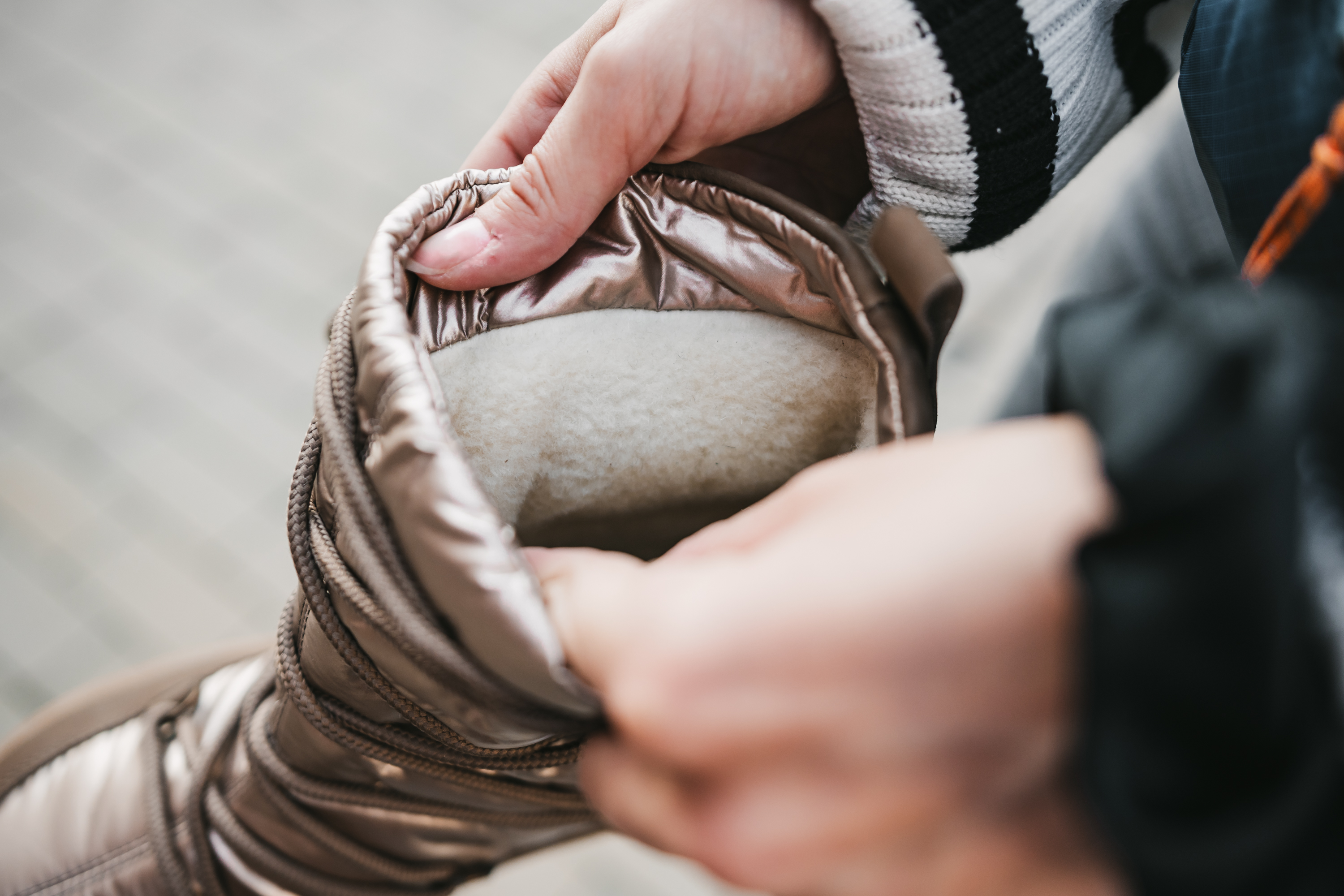
Merino wool
Merino wool is a premium, 100% natural material with a rich history of use and remarkable properties. It is obtained from Merino sheep; Australia and New Zealand are the largest producers worldwide. Merino sheep are sheared twice a year, yielding summer wool with different properties from winter wool. This makes Merino wool ideal for not only winter clothing and shoes but also summer wear. Merino wool is known for its unique properties, such as:
- Merino wool has natural antibacterial properties, making it resistant to odours. Properly maintaining and air-drying Merino wool items prevents the growth of bacteria and yeast, ensuring that they remain odour-free. Airing out Merino shoes and insoles after each use is essential to maintain their freshness.
- Merino wool is a hypoallergenic material that feels soft and gentle to the touch. The wool fibres are tiny and delicate, meaning they don't "bite" or irritate the skin. Additionally, no harmful chemicals or plasticisers are used in the processing of Merino wool, making it an ideal choice for people who are usually irritated by wool or have allergic reactions.
- Merino wool possesses remarkable properties that make it an excellent choice for clothing. The waxy surface of the wool fibres makes it water-repellent, allowing it to keep the body dry in wet conditions. However, it can still absorb water vapour, making it absorbent and keeping moisture away from the body. The wool is also quick-drying, making it easy to dry in the air. Merino wool has antibacterial properties that make it self-cleaning and highly pollution-resistant.
- Merino wool is an excellent material for functional clothing and footwear due to its perfect thermoregulatory properties. These properties result from the naturally wavy fibres that are closely laid together, creating air cells between them. These air cells keep our feet dry and warm, even in frigid temperatures, as air is a poor conductor of heat. The heat generated by our body is not carried away but remains and accumulates near its source, making Merino wool a fantastic thermal insulator.
Insole
It is essential to have good insoles in our shoes along with the lining. Most Be Lenka shoe models come with removable insoles, which can be purchased separately. To ensure that the insole performs well and maintains hygiene standards, we must take care of it. In the Autumn/Winter collection, you will find the following insoles:
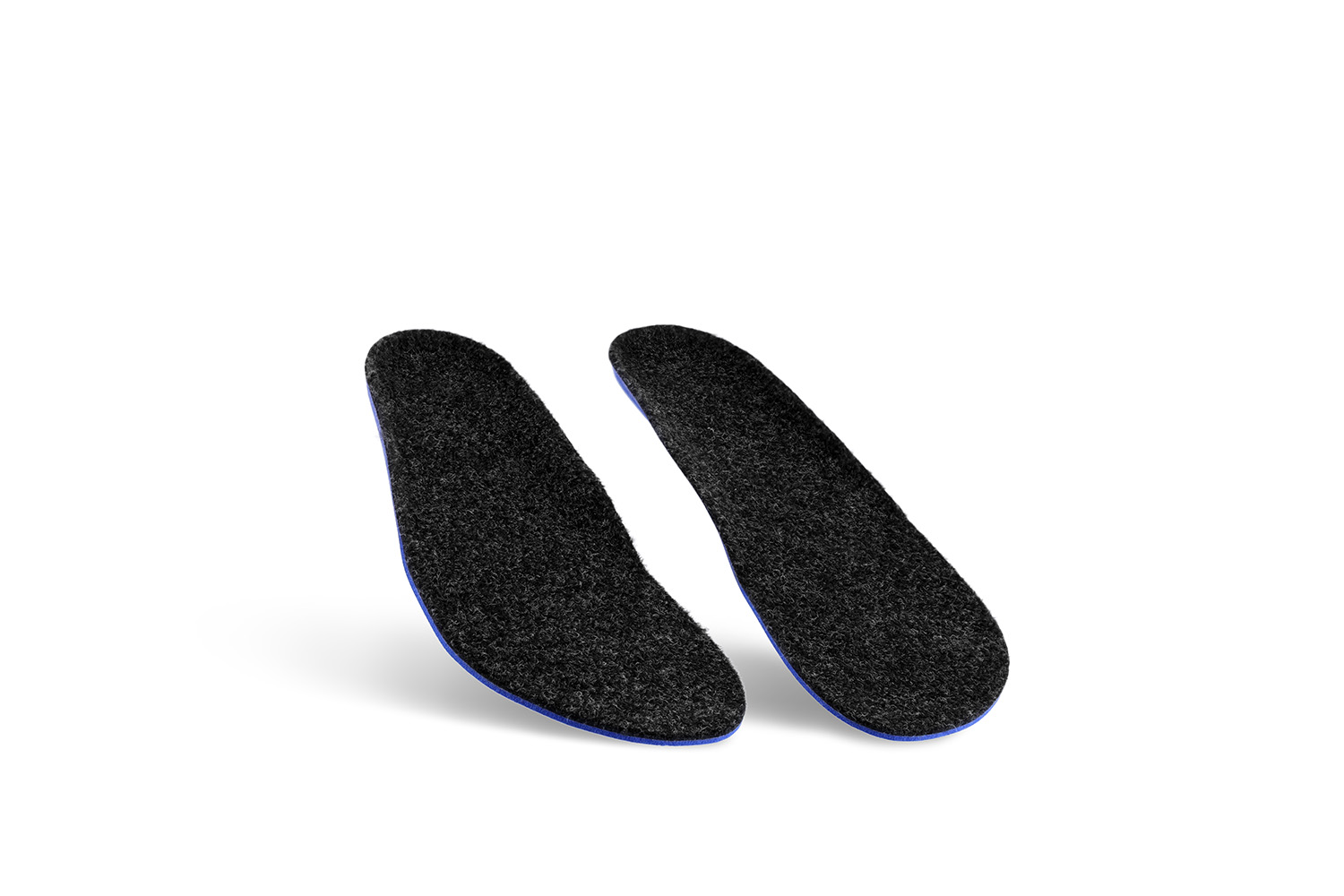
Thermo Fleece. This insole is made of recycled PU and fleece (black colour). It is suitable for the UniGrip sole and models Be Lenka Atlas, Be Lenka Entice, Be Lenka Bliss, Be Lenka Olympus, Be Lenka Nevada and Be Lenka Ranger, and for the ErgoGrip sole and models Be Lenka Diva, Be Lenka Mojo and Be Lenka Charlotte.
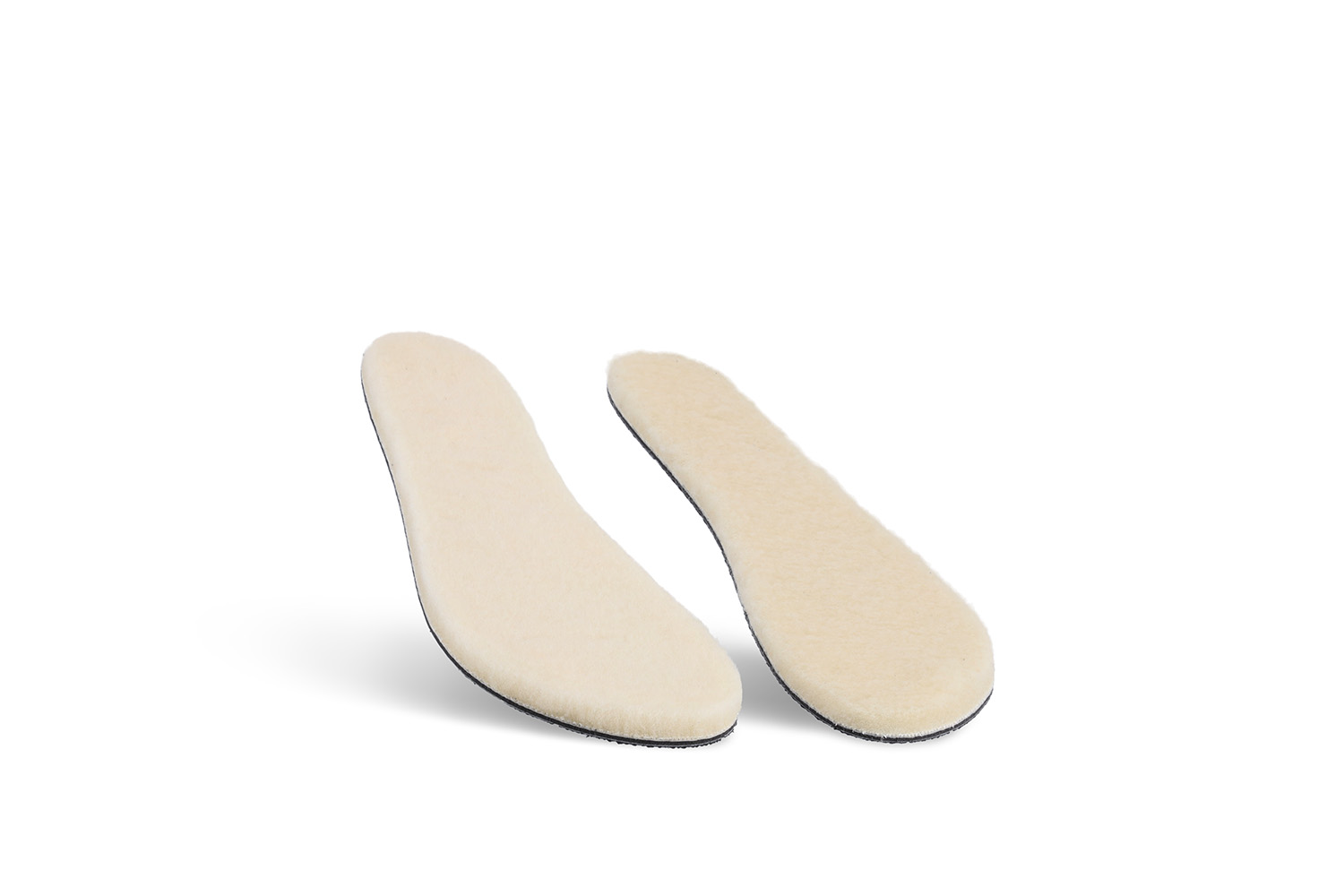
ThermoMax Wool. The shoe’s insole is made of 100% Merino wool, latex, and aluminium foil. This unique blend guarantees excellent thermal comfort and provides thermal insulation from the bottom of the shoe. You can rest assured that you won't feel cold from the ground, even if you're wearing thinner barefoot soles. ThermoMax Wool is suitable for the DeepGrip sole and models Be Lenka Winter, Be Lenka Polaris, Be Lenka Snowfox Woman, Be Lenka York, Be Lenka Olivia, Be Lenka Ranger 2.0 and Be Lenka Nevada.
The sole of the shoe
The upper part of the shoe, lining, and insole protect from cold and wet, but the sole is equally important.
When it comes to shoes, the sole plays a crucial role in determining its suitability for various weather and terrains. The sole's thickness, flexibility, and pattern are all important factors to consider. In our Autumn/Winter collection, we offer a range of soles designed for different conditions:
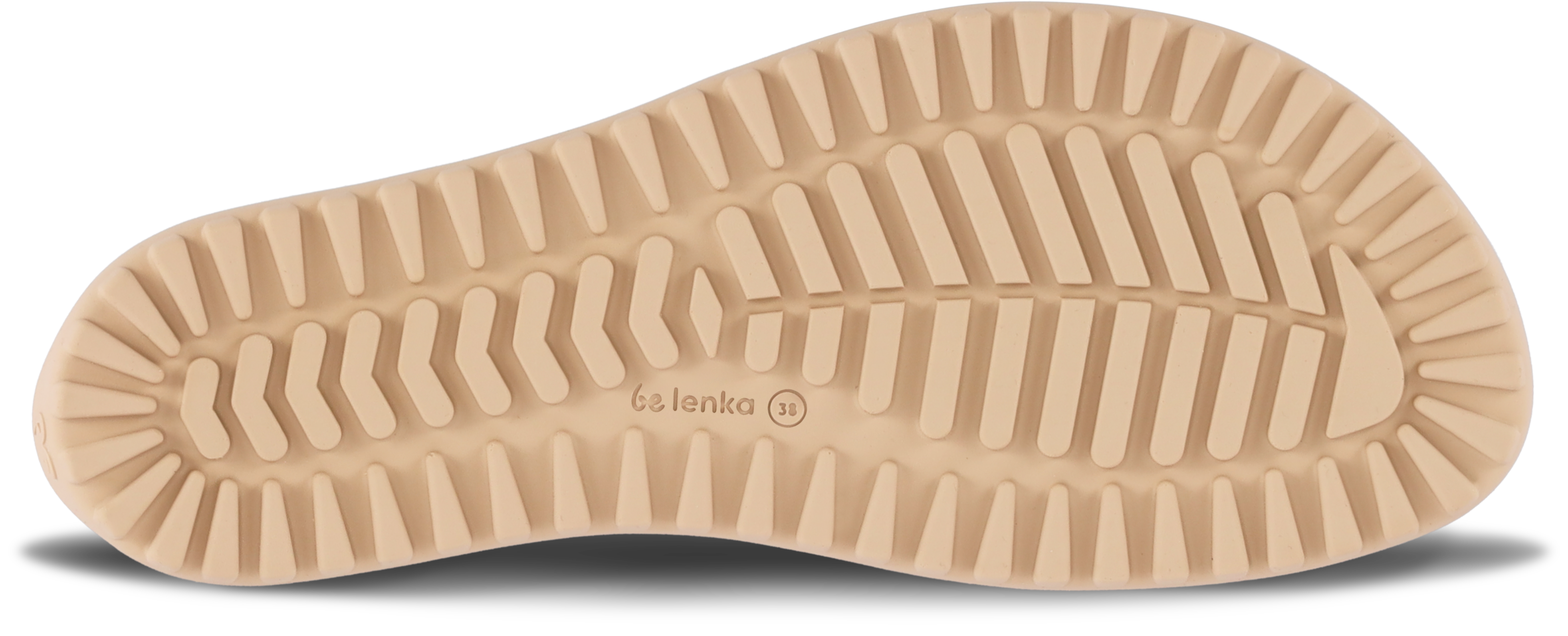
ErgoGrip – The sole is 3mm thick and has a pattern that is 4mm deep. It is suitable for wearing from autumn through to spring. The higher pattern provides excellent stability and thermal insulation from the ground. The pattern also ensures excellent grip and a sure step on various surfaces, even in different weather conditions. The sole still maintains high flexibility, giving you an unadulterated barefoot feeling. The Be Lenka Charlotte, Be Lenka Mojo, and Be Lenka Diva models all have an ErgoGrip sole.
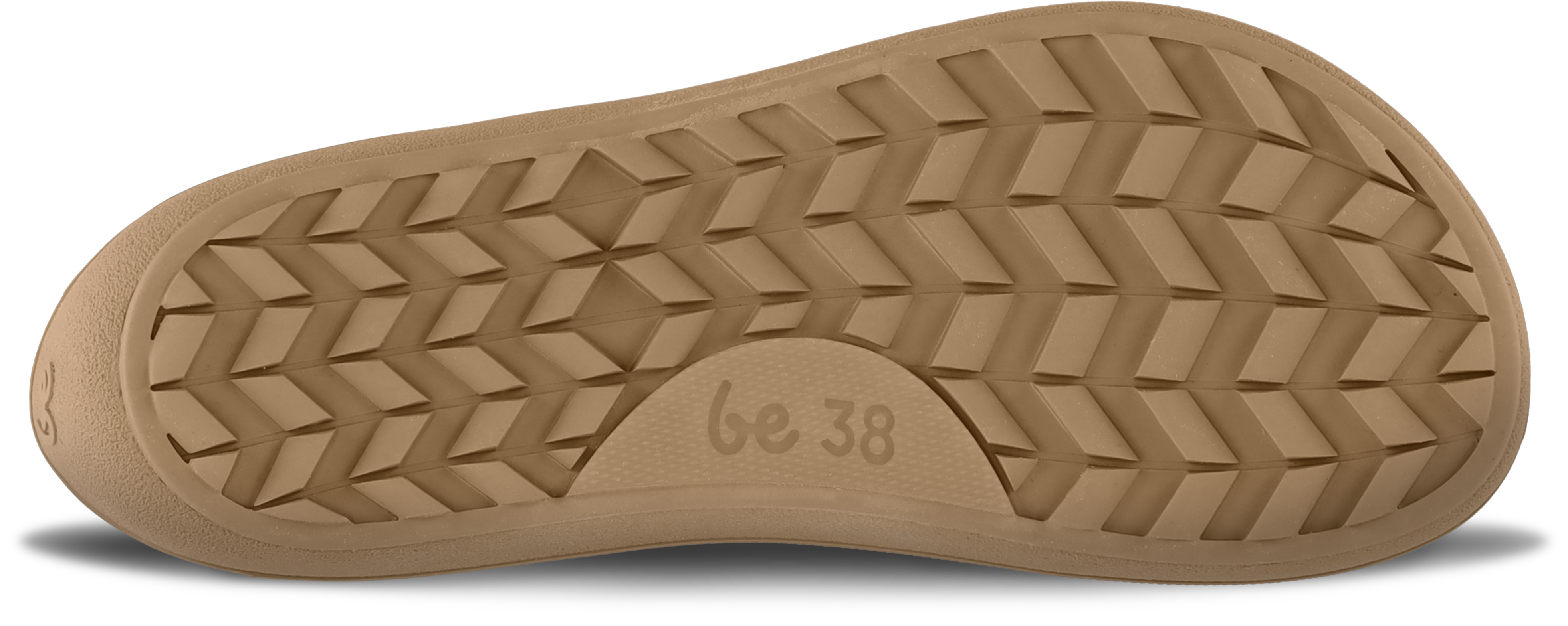
UniGrip – The Be Lenka Entice and Be Lenka Atlas models feature a 4mm thick sole with a 4mm deep pattern, making it suitable for use from autumn to spring. The sole has been tested at extreme temperatures of -20 ºC and has proven to be the ideal grip for everyday city duties. It provides the perfect combination of flexibility, grip, and comfort, ensuring a safe and comfortable step.
The UniGrip and DeepGrip soles can be combined with not only the original insole but also the ThermoMax Wool insole made of Merino wool for increased comfort and thermal insulation.
The DeepGrip and ErgoGrip soles possess self-cleaning properties thanks to their unique pattern. The distance between the protrusions in the pattern and the high flexibility of the sole ensure that dirt does not accumulate and instead falls out while walking. This makes it easier to maintain the cleanliness of the shoes and enhances their durability.
In addition, the depth of the pattern and the distance between the protrusions drain water perfectly, so the Autumn/Winter collection models offer perfect stability even on wet surfaces.
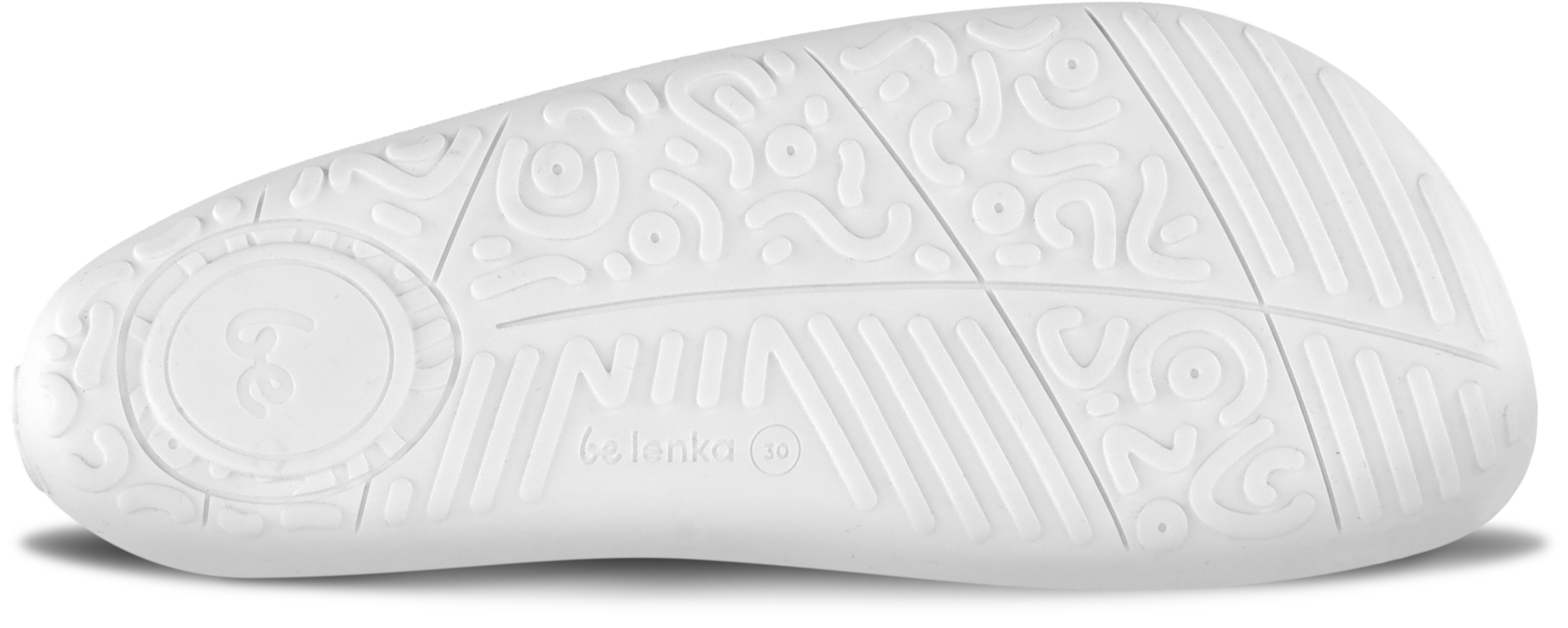
The Winter Kids model for children features a KidsUltraGrip sole that is 4mm thick with a 1mm deep pattern. This sole is suitable for all seasons and is also present in summer models. It is made of a special blend of thermoplastic rubber that ensures excellent resistance to abrasion, flexibility and durability. The heel has a larger tread area to fit the needs of a child's foot, while the extended front part protects the toe of the shoe. The tread protrusions are arranged in a way that ensures excellent grip. Moreover, the grip design looks like a cheerful drawing and leaves a playful imprint in the snow.
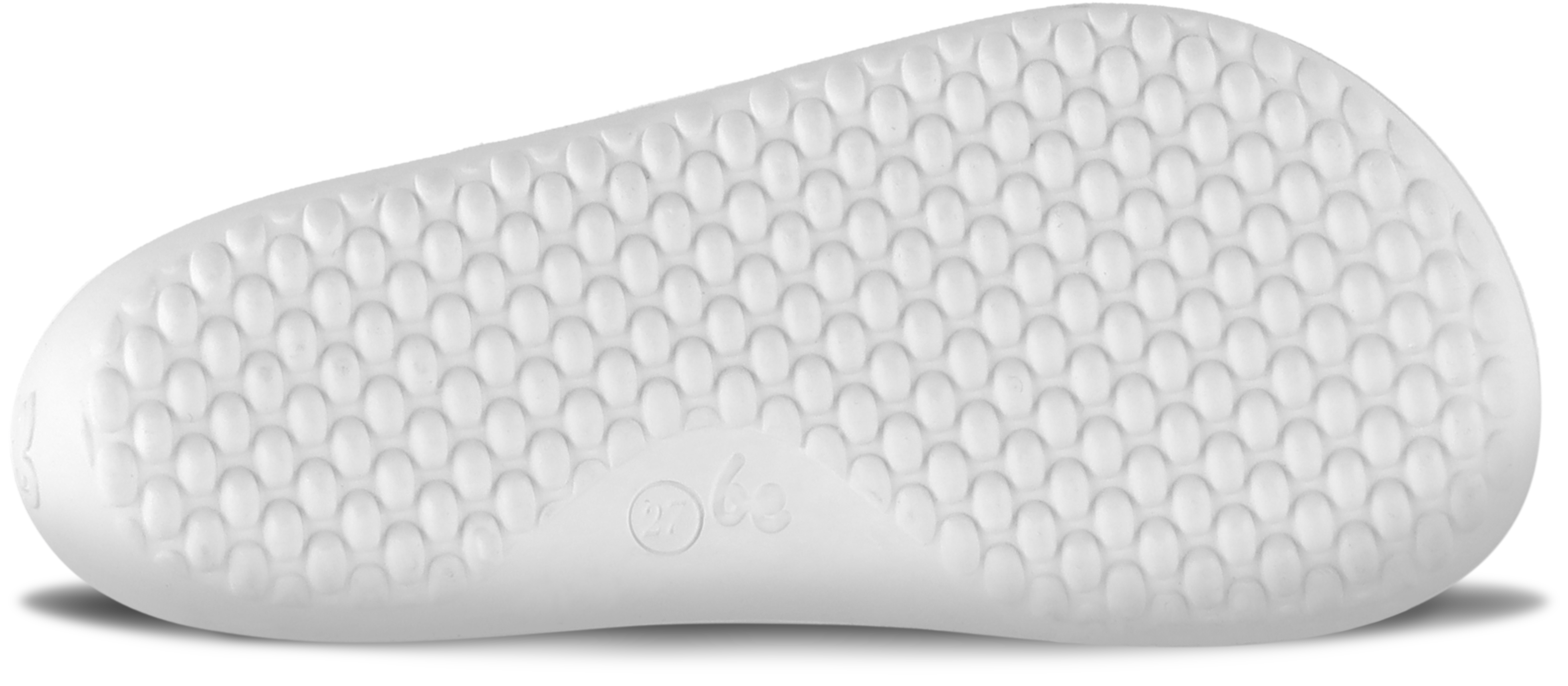
Be Lenka Snowfox Kids 2.0 is equipped with a KidsComfort sole that has a thickness of 4.5 mm and a 1.5 mm deep pattern. The sole thickness is carefully selected to cater for the needs of a child's foot. The protrusions on the sole provide excellent stability and step control during everyday activities, ensuring that your child's feet remain comfortable and well-supported.
A good quality shoe is a perfect symphony of various subtle details that work together seamlessly. These details include the design, material quality, finishing, insulation, and tread depth. The shape of the sole should mimic the natural shape of the foot and provide ample space for comfortable movement. The sole must be flexible and dependable and provide the sensation of walking barefoot, even when wearing shoes. When all the small details come together, a shoe is created that its maker can be proud of and the owner will cherish and wear for many years.
At Be Lenka, we pay attention to every detail, and our shoes go through multiple checks to ensure the highest quality of craftsmanship. Thanks to our honest approach towards designing and manufacturing our shoes and our unwavering dedication, our shoes have become one of the world's leading barefoot footwear brands, providing you with the joy of barefoot freedom.

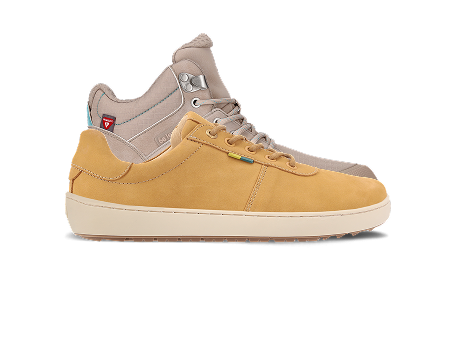
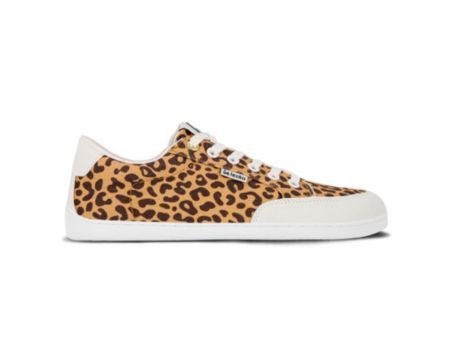

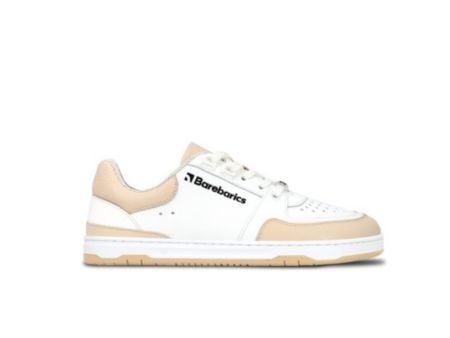
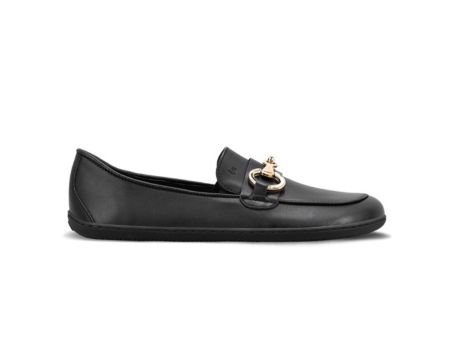
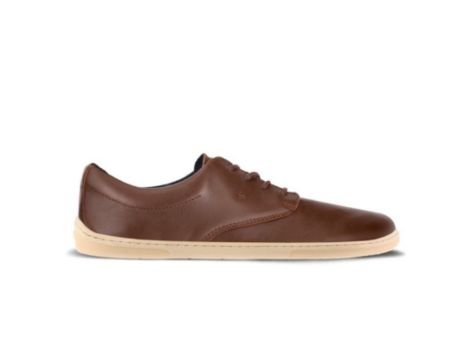

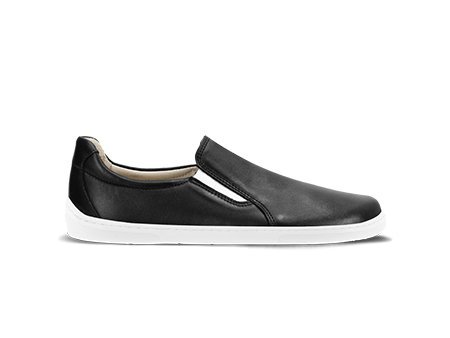

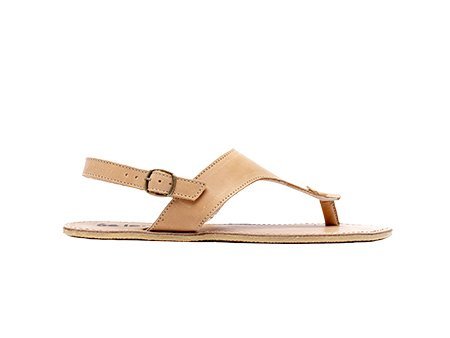
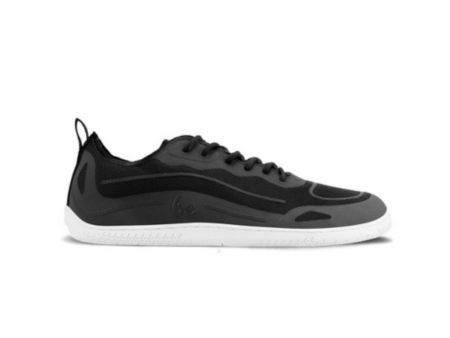
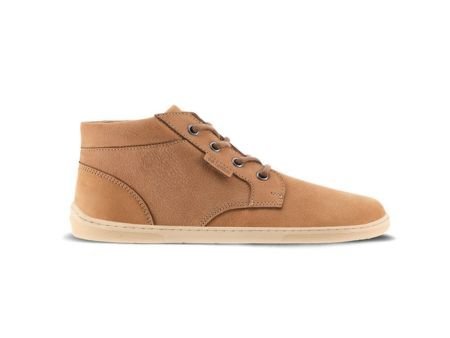
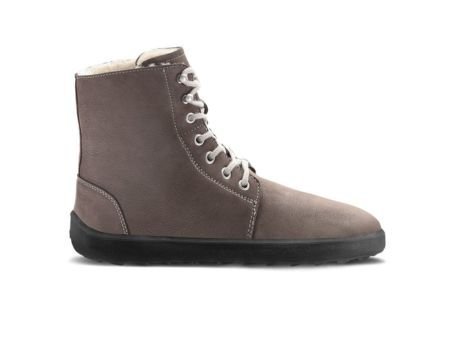
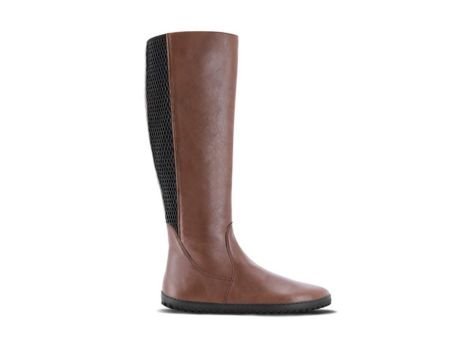
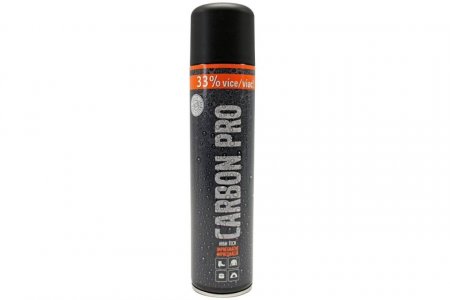

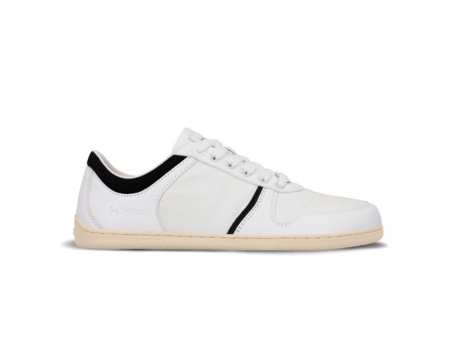
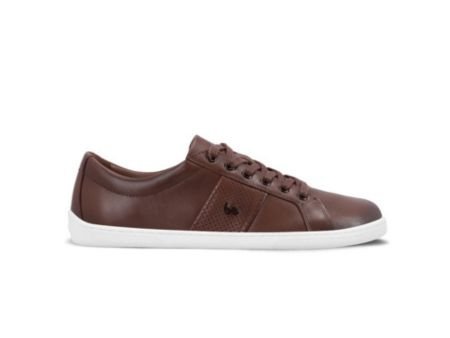
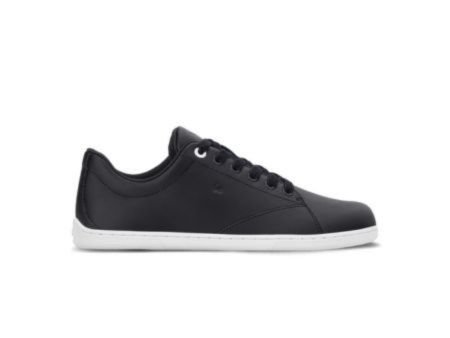
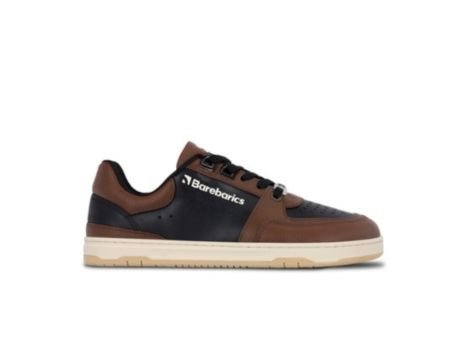
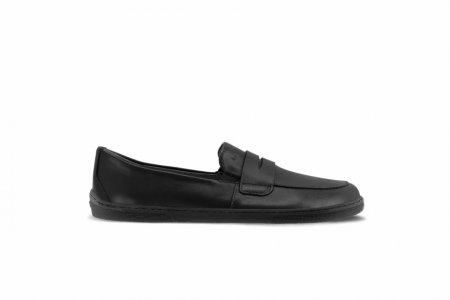
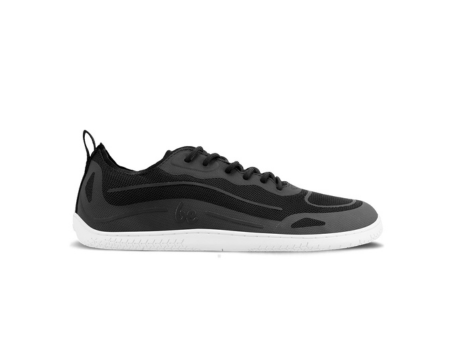



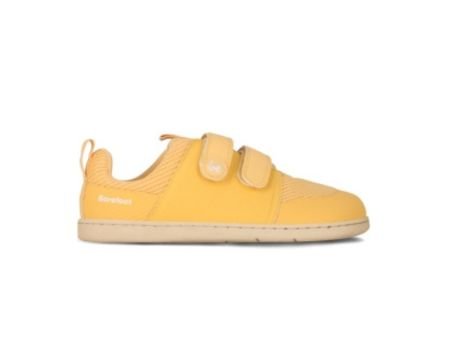

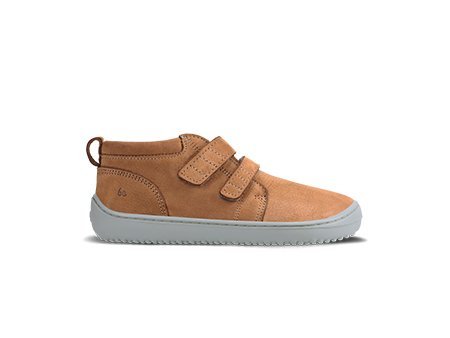
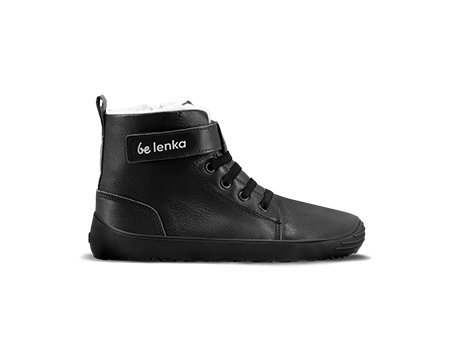



 Be Lenka
Be Lenka
